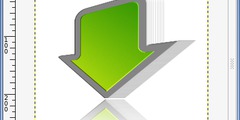Can't recompose LAB: Specified layer # not found
This discussion is connected to the gimp-user-list.gnome.org mailing list which is provided by the GIMP developers and not related to gimpusers.com.
This is a read-only list on gimpusers.com so this discussion thread is read-only, too.
| Can't recompose LAB: Specified layer # not found | Colin Brace | 04 Feb 22:19 |
| Can't recompose LAB: Specified layer # not found | saulgoode@flashingtwelve.brickfilms.com | 05 Feb 04:08 |
| Can't recompose LAB: Specified layer # not found | Dave 77459 | 28 Sep 19:29 |
Can't recompose LAB: Specified layer # not found
Hi all,
I have just been following this very simple tutorial using a LAB overlay technique:
http://www.dslreports.com/forum/remark,15173919
These are the main steps:
5)Duplicate B layer, set "B Copy" to overlay (Opacity is 100%).
6)Merge both B layers (Image>Merge Visible Layers/CTRL-M) Choose Expand as
necessary (though other options don't make a difference in this case) Hit
Ok.
7)Repeat steps #4 through #6 for the "A" layer.
However, after following these steps, when I click the "Recompose" command, I get an error message on the status line:
Specified layer [some number] not found.
If I skip the overlay steps, just decompose to LAB and recompose, it works OK. Any idea what is going wrong here?
I am using v2.6.4 under F10.
Thanks.
-----
Colin Brace
Amsterdam
http://lim.nl
Can't recompose LAB: Specified layer # not found
Quoting Colin Brace :
:
:
5)Duplicate B layer, set "B Copy" to overlay (Opacity is 100%). 6)Merge both B layers (Image>Merge Visible Layers/CTRL-M) Choose Expand as necessary (though other options don't make a difference in this case) Hit Ok.
7)Repeat steps #4 through #6 for the "A" layer.However, after following these steps, when I click the "Recompose" command, I get an error message on the status line:
Specified layer [some number] not found.
The problem is that 'Recompose' relies upon the layer IDs of the three layers and your merging of two layers results in the new layer being given a different layer ID.
As a work-around, you need to duplicate your B layer twice and work with the two copies, leaving the original layer untouched. After you have completed your editing and merged your copies together, perform an "Edit->Cut", Paste it onto the original layer, and Anchor the floating layer.
Unlike Merging, pasting and anchoring will not change the layer ID of the original layer and Recompose will function as expected.
Can't recompose LAB: Specified layer # not found
I found this old Q/A after trying the tutorial referenced:
http://www.dslreports.com/forum/remark,15173919
Here is the full list of steps:
1)Open Image
2)Go to Image>Mode>Decompose
3)Check LAB, Check Decompose to Layers, hit OK
4)Open Layers dialog. Make only the B layer visible.
5)Duplicate B layer, set "B Copy" to overlay (Opacity is 100%).
6)Merge both B layers (Image>Merge Visible Layers/CTRL-M) Choose Expand as
necessary (though other options don't make a difference in this case) Hit
Ok.
7)Repeat steps #4 through #6 for the "A" layer.
8)Select "L" layer, apply a slight S curve, mostly adjusted towards the dark
end of the curve. (GIMP's overlay is calculated a bit differently)
9)Image>Mode>Recompose and Make sure you select LAB with the correct layer
order.
Following the help provided below (Copy, Anchor), I could do it. But I have a question regarding Step 9 above. Is the order of the layers important? It seems that the layers are tagged, so as long as the original layers are present, the order shouldn't matter. Right?
Not to confuse issues, but my original reason for looking at the above page was for this PS tutorial:
http://freeonlineclasses.net/photoshop-tutorials/photo-effects/the-golden-glow.html
On page two of this tutorial, when they pick the B channel (from LAB), they get an orangy cast. I faked this by picking the B layer from the LAB decomposition, then color changing to shift red and yellow to the limits. I don't know what LAB is doing, but the result is pleasing and seems to mimic the tutorial. But is there a direct corollary to the golden glow tutorial?
Dave
On Wed, Feb 4, 2009 at 10:08 PM, wrote:
Quoting Colin Brace :
:
:5)Duplicate B layer, set "B Copy" to overlay (Opacity is 100%). 6)Merge both B layers (Image>Merge Visible Layers/CTRL-M) Choose Expand
as
necessary (though other options don't make a difference in this case) Hit Ok.
7)Repeat steps #4 through #6 for the "A" layer.However, after following these steps, when I click the "Recompose"
command,
I get an error message on the status line:
Specified layer [some number] not found.
The problem is that 'Recompose' relies upon the layer IDs of the three layers and your merging of two layers results in the new layer being given a different layer ID.
As a work-around, you need to duplicate your B layer twice and work with the two copies, leaving the original layer untouched. After you have completed your editing and merged your copies together, perform an "Edit->Cut", Paste it onto the original layer, and Anchor the floating layer.
Unlike Merging, pasting and anchoring will not change the layer ID of the original layer and Recompose will function as expected.











